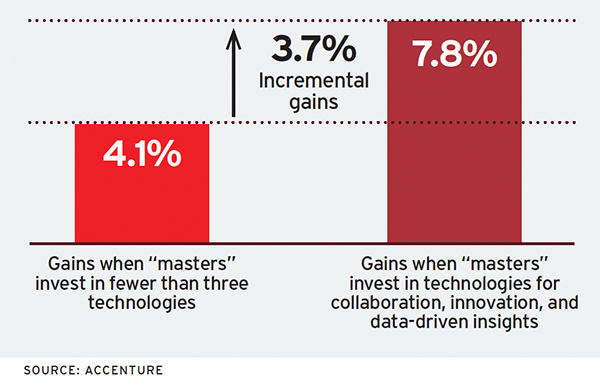Master Class in ROI

Large companies invested $153.4 million on average to transform their supply chain in the past three years, but only 10% of leaders became "masters" in achieving a profitable customer experience, according to a survey from Accenture. Successful companies took the following steps, according to the study:
Customer-first approach. They base their supply chain strategy on what the customer values, which is increasingly complex as customer experiences become more tailored and personalized. As customers move toward products and services as experiences, they expect a more holistic package, and supply chains are a critical part of creating this value-driven customer experience. Masters focus on the value propositions that matter most when investing in their supply chains.
Turning data into innovation. Masters invest in digitization and create a foundation for collaboration. Data has become the new currency that feeds customer value, so masters invest in new technologies to turn data into insights. Investing in building analytical, asset-light collaboration structures may significantly increase the supply chain’s impact on revenue. Collaboration, innovation, and data-driven insight technologies accounted for more than two-thirds of masters’ average revenue growth (see chart).
Mature capabilities. They focus on capabilities that enhance agility and foster innovation, while building in security. Business-to-business companies’ top capabilities include blockchain, designing products to meet target margins, customer and product segmentation in real time, predictive analytics, and proactive risk management for data privacy. Business-to-consumer companies’ top capabilities include customer and product segmentation in real time, proactive risk management for data privacy, warehouse automation, and external partnerships that improve efficiencies.
Engaging with leadership. Their chief executive officers are more likely to drive supply chain discussions with the board and turn them into results, allocating funds and talent that fuel innovation and transform the supply chain.
